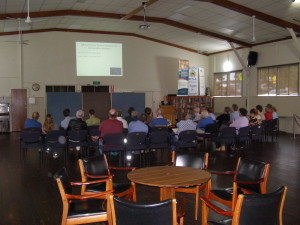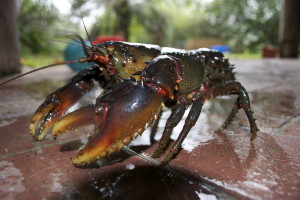 LBCCG supported research in the Lake Baroon catchment on two local crayfish species by Charlotte Hurry, Griffith University. On October 30 Charlotte presented her findings to the local Maleny community.
LBCCG supported research in the Lake Baroon catchment on two local crayfish species by Charlotte Hurry, Griffith University. On October 30 Charlotte presented her findings to the local Maleny community.
Abstract. Conservation plans can benefit from understanding patterns of genetic structure because many endangered species are spatially fragmented. In particular, headwater species in high elevations are expected to exhibit a high level of population structure, as dispersal through lowland streams may be limited. Euastacus urospinosus is an endangered freshwater crayfish that, until recently, was thought to have a distribution of just 200 km2. In the current study, we identified a total of 26 locations for this species across a 1225 km2 region spanning the Brisbane and Mary River catchments of south-east Queensland, Australia. We then used mitochondrial DNA sequence data to investigate the population structure and the phylogeographic divergence between four uplands. We found significant population differentiation for this species, which conforms to the headwater model of genetic structure. Further, we found that fragmentation between these uplands is most likely historical, as the first divergence between lineages dated back 2.1 million years. Overall, we found no reason to remove the conservation rating of ‘endangered’ for this species. Conservation plans should seek to preserve the genetic integrity of these uplands by considering them to be genetically distinct and isolated populations.


